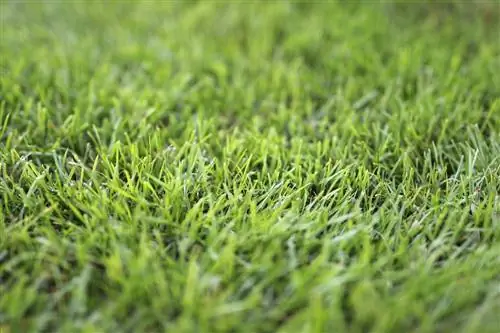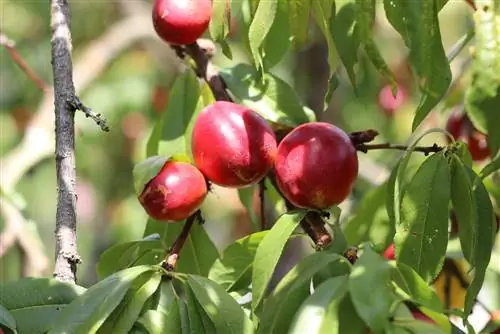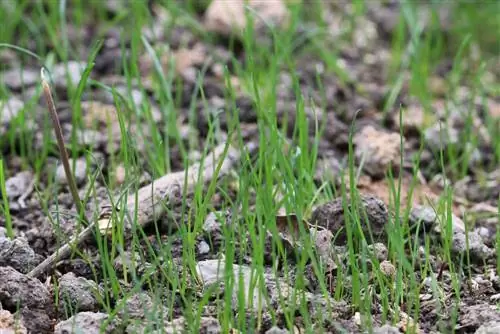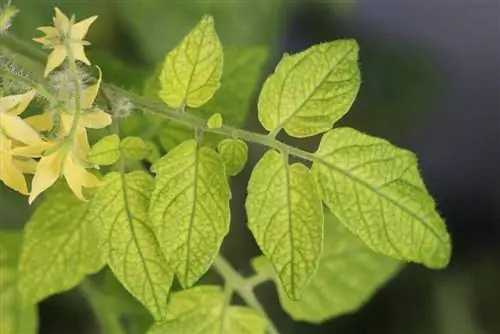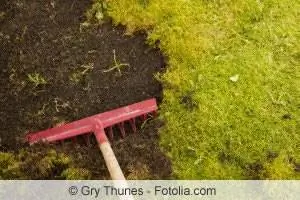- Author admin [email protected].
- Public 2023-12-17 03:39.
- Last modified 2025-01-24 12:45.
Iron fertilizer helps effectively against moss infestation on the meadow. It also strengthens the lawn. However, it is also corrosive and can therefore pose a danger.
Preparation
Ideally, the lawn is mowed a week before fertilization. This allows the agent to penetrate the moss and soil better.
Tip:
If the substrate is very dry, it is also recommended to water beforehand. This makes the earth more receptive.
Time
The best time for fertilization is early spring. As soon as the grass plants sprout again, the measure can be considered. This means the moss can be effectively removed by summer and the grass can grow back. This means that the lawn is green and accessible again just in time for the gardening season.
Protective measures
Iron fertilizer poses a danger to animals and people because it has a corrosive effect. The lawn should therefore not be walked on after the product has been applied. A week after watering, sprinkling or several days of persistent rain, it is safe again. The fertilizer must first be completely absorbed into the soil. Children and pets should be kept away from the lawn for at least a week. You should also protect yourself thoroughly during application.
Wear:
- Breathing mask or face mask
- Rubber gloves
- Rubber boots
- Safety glasses
This can avoid direct contact. Also pay attention to your clothing, as splashes or drops can also cause discoloration. For this reason, the iron fertilizer should not get onto paving slabs or lawn edging stones.
Tip:
When dosing, follow the manufacturer's instructions exactly. Otherwise, you risk over-fertilization and chemical burns on the roots of the plants.
Applying
The fertilizer can be applied in dry or liquid form. Both options have advantages and disadvantages. Dry application can be carried out very conveniently with a spreader. This makes distribution easy and very even.
The procedure is as follows:
- Mowing the lawn
- Water
- Fill and adjust the spreader truck
- Run lanes to supply the entire lawn
- Water the lawn thoroughly
In the second variant, liquid iron fertilizer is chosen or powder is added directly to the water. You must moisten the lawn evenly. The downside is that greater caution must be exercised. Because the amount of water is more difficult to control. However, this variant is ideal for selective moss infestation, as the agent can be used specifically.
Tip:
A gritting truck does not necessarily have to be purchased. It can also be borrowed, which is particularly useful if you use it infrequently.

Frequency
One application per year is usually sufficient. If deficiency symptoms still appear, an analysis should be carried out. Signs include appearances such as:
- Death
- Spreading of moss
- Clover
- brownish or yellowish discoloration
- bald spots
- Growth disorders
All of this indicates that care and support are not sufficient. An examination of the substrate is essential for targeted fertilization, because not always there is just an iron deficiency. Coordinated fertilization and adapted care can provide quick relief as well as prevent bald spots or discoloration.
Alternatives and prevention
Alternatives to using iron fertilizer on the lawn also serve to prevent moss, weeds and other undesirable phenomena. These measures include:
- adapted fertilization
- sufficient watering
- Aeration by scarifying
- regular mowing
- Avoid shadows
If the lawn is regularly watered, fertilized and mowed, the grass plants are strong and moss has less chance of spreading. If this still spreads, the cause may be that there is too little light. Sawn wood and green waste should therefore be removed immediately and larger, shade-providing plants should be trimmed if necessary.
Dethatching, on the other hand, ensures that existing mosses are torn out and the soil is ventilated and loosened. Nutrients and water can then penetrate the substrate better. This in turn strengthens the grass and prevents problems.

